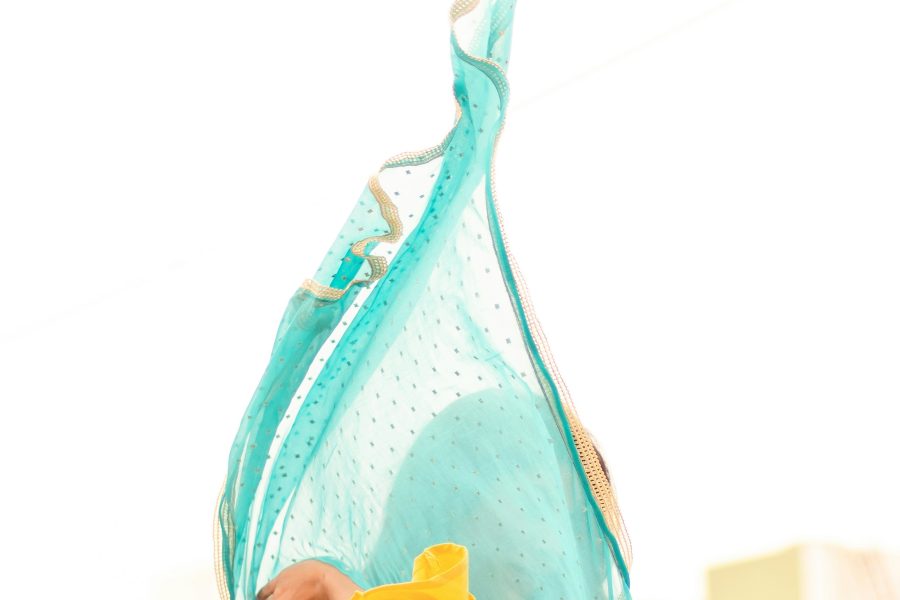Introduction
Welcome to a journey beyond the glitz and glamour of the runway, where fashion meets responsibility and sustainability. In today’s world, ethical fashion isn’t just about looking good, it’s about feeling good and doing good. Through sustainable practices and conscious choices, we can reduce the environmental impact of the fashion industry significantly. This blog explores how your wardrobe can contribute to a healthier planet simply by the choices you make in fashion. Join us as we dive into the concepts of ethical fashion, understand its importance, and discover how to make style choices that are both trendy and environmentally friendly.
The Fashion Industry’s Carbon Footprint
The extent of fast fashion companies and its implications to the environment.
Fast fashion has made people switch the traditional way of clothing where they wear pieces that are stylish and can be easily obtained in the market. Nevertheless, its environmental effect is immensely negative. Growth in efficiency in the new system of capitalist economy, often referred to as the fast fashion model has since tripled the rate in which clothing has been manufactured since the early 2000s and contributed to the consumption of staggering amounts of clothes and in turn, waste. Every year, millions of tonnes of clothing are disposed of in landfill sites or are burned; this is the material that will never decompose and will remain in the environment for several hundred years. Besides, it is equally a sad reality that the clothes today use synthetic fibers like polyester that originate from fossil fuels and add to the carbon footprint of the industry. The process is water-consuming, discharging dyes and treatment chemicals into the water system, and the expanded energy use as prompted by the fast fashion system also increases the efforts effect.
General information about the fashion industries’ contribution to global warming.
Fashion industries of the world are primarily the second largest polluters after the oil-producing industries. Globally, it contributed to approximately 10% of carbon emissions per year; it has higher emissions compared to international aviation and maritime transport put together. Chief sub-processes are related to energy consumption, water usage and chemicals used in dyeing and finishing of textile products. Transportation cost is also massive as the goods are shipped across the world, especially in the case of international contracts. Awareness of these effects accentuates the necessity of professionalism as well as sustainability in the industry.
Ethical Fashion Practices
Definition of ethical fashion.
Ethical fashion, therefore is a concept of designing and dressing that focuses on the optimization of fashion’s positive impacts on people and society without damaging the environment. This changed perspective extends from labor rights and wages to the company operation’s openness and the environmental footprint of a product, from start to finish. Ethical fashion refers not only to fair production processes in terms of the environment; it is equally concerned with fairness in dealing with people as well as the manner in which the fashion businesses are economically structured – all pillars that make up the sustainable platform in fashion.
Importance of sustainable sourcing.
Source sustainably and the rest follows is perhaps the best way to describe the basis of ethical fashion. It entails identifying and utilizing material and methods that do not harm the environment to the extent possible and thus minimizes a brand’s environmental impact. Key aspects include:
– Selecting organic fabrics, which are chemical free and are not subjected to fertilizers which harms the farmers or the consumers.
– Using recycled fibre in products to cut on the use of virgin fibres on the market.
– Endowment of smallholder farmers and producers with a view of boosting up the small holder’s producer’s economy and development of the less developed regions.
They also contribute to maintaining the species and environment on our planet and to using water and energy to a greater extend.
Advantages accruing from environmental friendly production processes.
Transitioning to environmentalism for production has various advantages to the environment, business entities, and buyers. When implemented, these strategies can greatly reduce levels of green house gases, cut emissions on water and air, as well as waste. Methods include:
– Ensuring that generation and production plants use renewable energy hence reducing on the emission of carbon gases.
– Mending the water-saving measures for instance closed loop systems where water is only used and actively circulated in the manufacturing process.
– Selecting of natural or less hazardous chemical in the dyeing and finishing methods so as not to pollute water bodies in the local region.
Implementation of such practices not only reduces the pressure on the environment by fashion businesses but also aims at improving the image of the brand and satisfying existing and potential customers’ demands for eco-friendly products. In essence, incorporating environmentally sourced materials into the fashion business, consumers will not only look elegant when they wear good clothes but also feel they have contributed to saving the environment.
Sustainability Practices with Relation to the Environment
Thus, when we speak about sustainability in the context of the fashion industry, we refer to actions aimed at reducing adverse environmental effects. A shift to more sustainable approaches will greatly help in decreasing the brands’ environmental impact, which in turn has a positive effect on numerous aspects of the Earth.
Reduction of carbon emissions
There are several advantages of sustainable fashion; but, one of the biggest is the lower amounts of carbon emitted. Traditionally, most fashion production consumes a significant amounts of energy which is normally acquired from fossil sources which are the greatest emitters of greenhouse gases. In contrast, eco-friendly fashion brands may utilize renewable resources of energy in producing clothes and implement the energy-efficient measures in production. These measures substantial reduce the amount of carbon dioxide emission into the atmosphere, which is at the root of climate change.
Decrease in waste generation
Sustainability also leads to a reduction in the amount of wasted which is easily noticeable. The fashion industry is the worst offender when it comes to the disposal of waste; it generates pre-consumer and post-consumer waste textiles. Sustainable fashion steps away from the traditional “take-make-waste” model, opting for approaches like:Sustainable fashion steps away from the traditional “take-make-waste” model, opting for approaches like:
– This method involves the making of new end-products from waste products that were earlier in circulation.
– Providing clothes that can be recycled faster on reaching their useful life cycle.
– Applying the zero waste design strategies that attempt to utilize each piece of fabric
These methods assist in reducing a huge figure on the quantity of waste that is disposed off in the landfills on a regular basis.
Preservation of natural resources
Sustainable fashion also has an important function in the protection of bodily assets and natural resources. Contemporary fashion is highly dependent on water and other materials, and their procurement does not exclude such destructive processes as deforestation and pollution of water bodies. Sustainable brands though use recycled material duly note that new fibers should be derived from sustainable sources. Besides, the application of water efficient technologies in fabric processing will go along way in reducing the water using in the sector while at the same protecting the water resources.
Consumer Role in Sustainable Fashion
Due to the growing consciousness of the population regarding the consequences caused by the fashion industry, society is regarded as one of the key elements that can influence the positive evolution of the industry. Every single purchasing decision can be a carrier of a positive impact.
Making conscious shopping decisions
Conscious shopping therefore refers to making a careful decision on what one has to purchase, or which products to buy keeping into consideration the consequences that they will have on the environment. This can be done by purchasing clothes that has been produced from organic or recycled material, one can decide to buy fewer clothes but with better quality, or going for products from some local companies which use ethical procedures in their practices. Indeed, consumers can:
– It is necessary to look up the sources for acquiring products and the production of the brands before making a final decision on the purchase.
– Select products that would serve the consumer for rather long to minimize the recurrent purchasing.
– For example, encouraged to wear second-hand or vintage clothing so that the life of previous fashion clothing is extended
All of these actions mean the inclusion of less carbon per person, and due to that, encouraging production changes in the fashion industry.
Patronage of the environment-friendly clothing brands
Another way consumers can help is by being clients to sustainable fashion brands Another instrument that consumers have is buying from environmentally friendly fashion brands. In this way, consumers, by spending money on brands that take into consideration such issues, convey the relevant message to the industry. It is beneficial for most environmentally friendly brands to communicate production processes, working conditions, and materials to the consumers. Moreover, through regardess associations consumers can share information about brands they choose and the practices that those brands employ, thus informing others of the brand’s actions and strongly influencing decision making.
Therefore, sustainable fashion is not only the removal of more negative influences by fashion-industry; it is also the consumer’s realization and encouragement towards being an active role model and being responsible when it comes to fashion. Thus, future fashion can be brighter and more sustainable, if each person thinks twice before the purchase or actively searches for brands that are ready to change the existing situation.
Conclusion
Ethical fashion is not your styling or, in fact, some man’s idea; instead, ethical fashion is shifting the ways and opinions about the outfit we possess. Therefore, the advantage of emergence, which stems from the focus on the idea of sustainable work or practice, is that mankind is working for nature and society. Thus, with the right choices for instance opting for materialistic apparels that are long lasting, going for brands that either create an environmental plan or have a record on their status on the environment or going with fair treatment of workers in creating the clothes we wear, it could be possible to minimize the effect of the social evil, which is regarded as the fashion industry on our environment. Hence, evolution rather than revolution as regards ethical fashion can truly be looked at as a giant leap along the road to the enhancement of continued improvement of the health of the earth. Closet yourself with Affordable Eco-chic clothes and let your dressing be your preaching to the next generation.




Leave a Comment